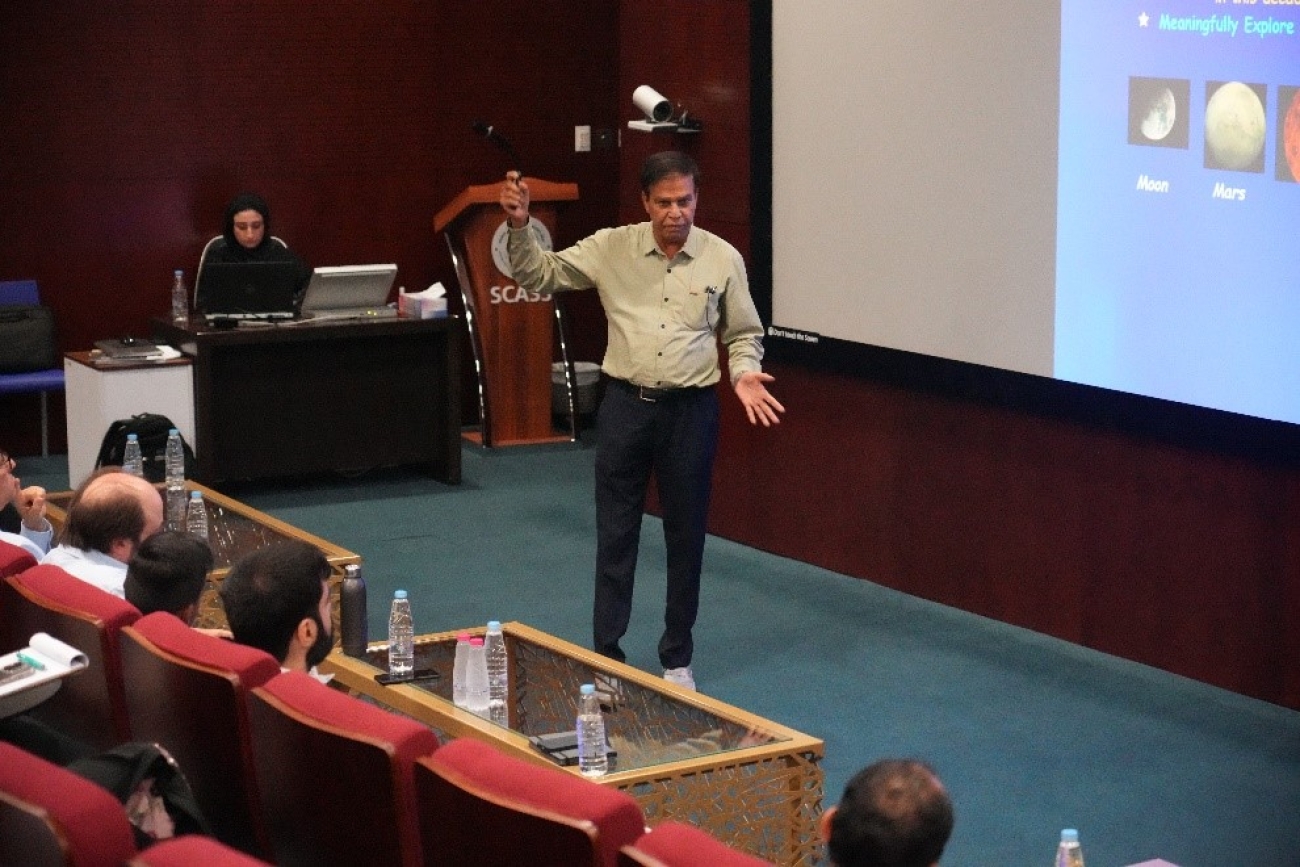Prof. Haider is a Senior Professor in the Department of Planetary Sciences at the Physical Research Laboratory. His scientific research includes the atmosphere, ionosphere, and magnetosphere of Mars, Aurora, and airglow emissions in the Martian atmosphere.
Both India and the United Arab Emirates (UAE) have made significant strides in the field of planetary exploration in recent years. Let's take a closer look at both countries' science and exploration efforts in the realm of planetary missions.
Indian Planetary Missions:
- Chandrayaan-1: Launched in 2008, Chandrayaan-1 was India's first lunar mission. It successfully reached the Moon and conducted various experiments, including mapping the lunar surface, searching for water ice, and studying the Moon's mineral composition.
- Mars Orbiter Mission (MOM): Launched in 2013, MOM, also known as Mangalyaan, became India's first interplanetary mission. It entered Mars orbit in 2014 and aimed to study the Martian atmosphere, morphology, mineralogy, and search for signs of life. In addition, MOM provided valuable data on Mars' atmosphere and its interaction with the solar wind.
- Chandrayaan-2: Launched in 2019, Chandrayaan-2 was India's ambitious lunar mission. It consisted of an orbiter, a lander called Vikram, and a rover named Pragyan. Although the lander's soft landing on the lunar surface did not go as planned, the orbiter continues to function and gather data on the Moon.
Emirates Planetary Missions:
- Mars Hope Probe: Launched in 2020, the Emirates Mars Mission, also known as the Mars Hope Probe, marked the UAE's first interplanetary mission. It successfully entered Mars orbit in February 2021. The mission aims to study the Martian atmosphere, weather patterns, and climate dynamics throughout the Martian year. The data collected will contribute to a better understanding of Mars' atmospheric escape and its connection to climate change on the planet.
India and the UAE have demonstrated their commitment to advancing scientific knowledge and technological capabilities through their respective planetary missions and other space exploration endeavors. These missions have contributed to our understanding of the Moon, Mars, and the broader universe, fostered scientific collaboration, and inspired the next generation of scientists and engineers.



